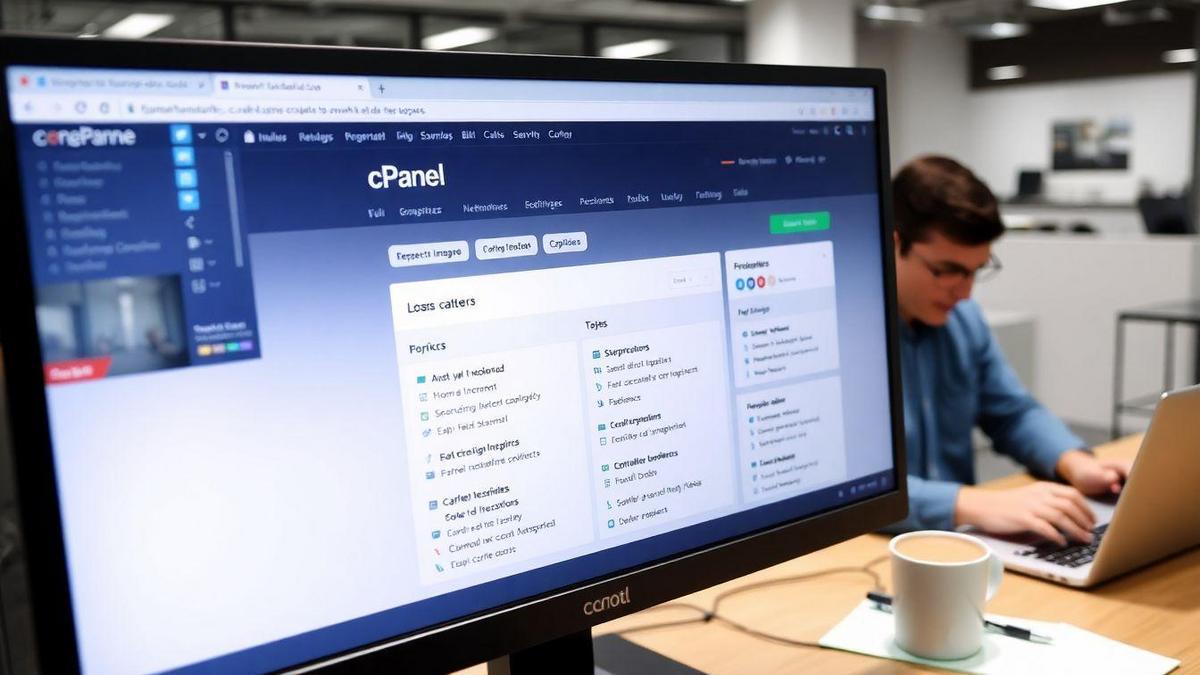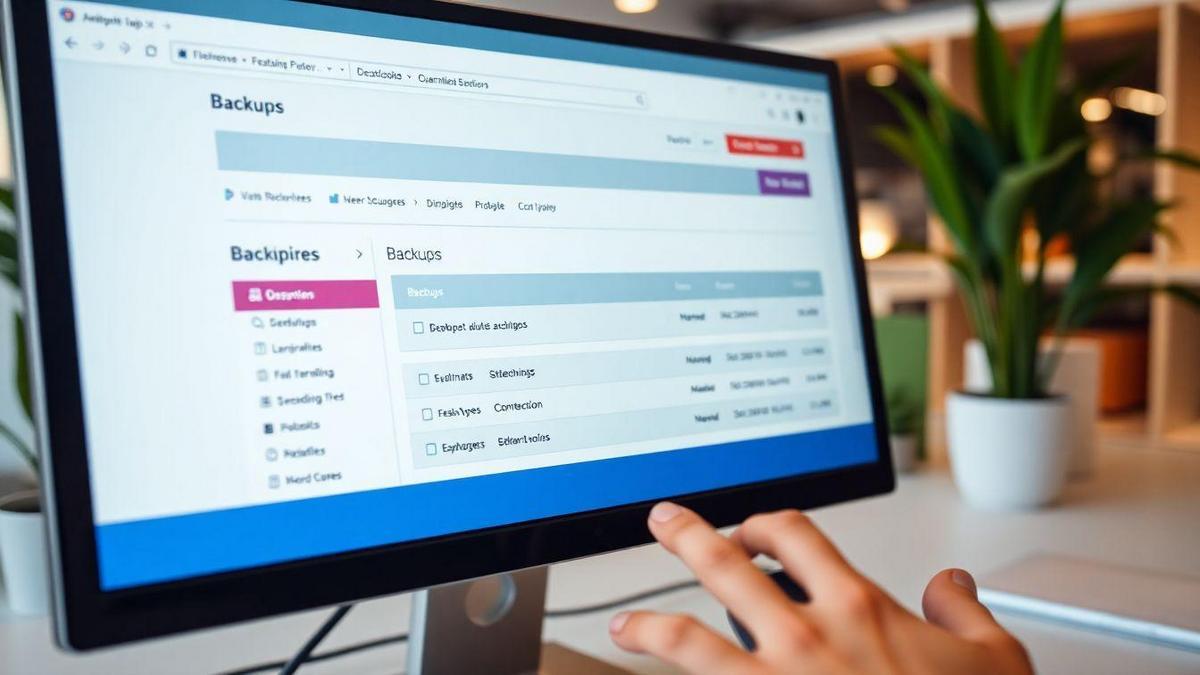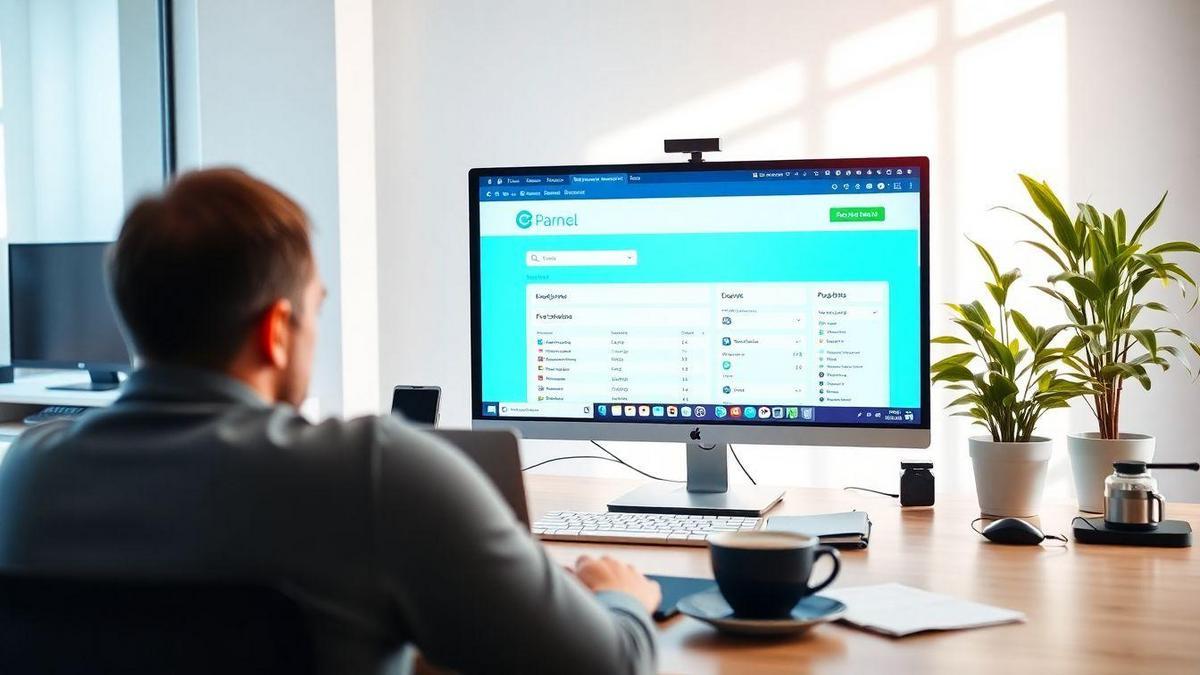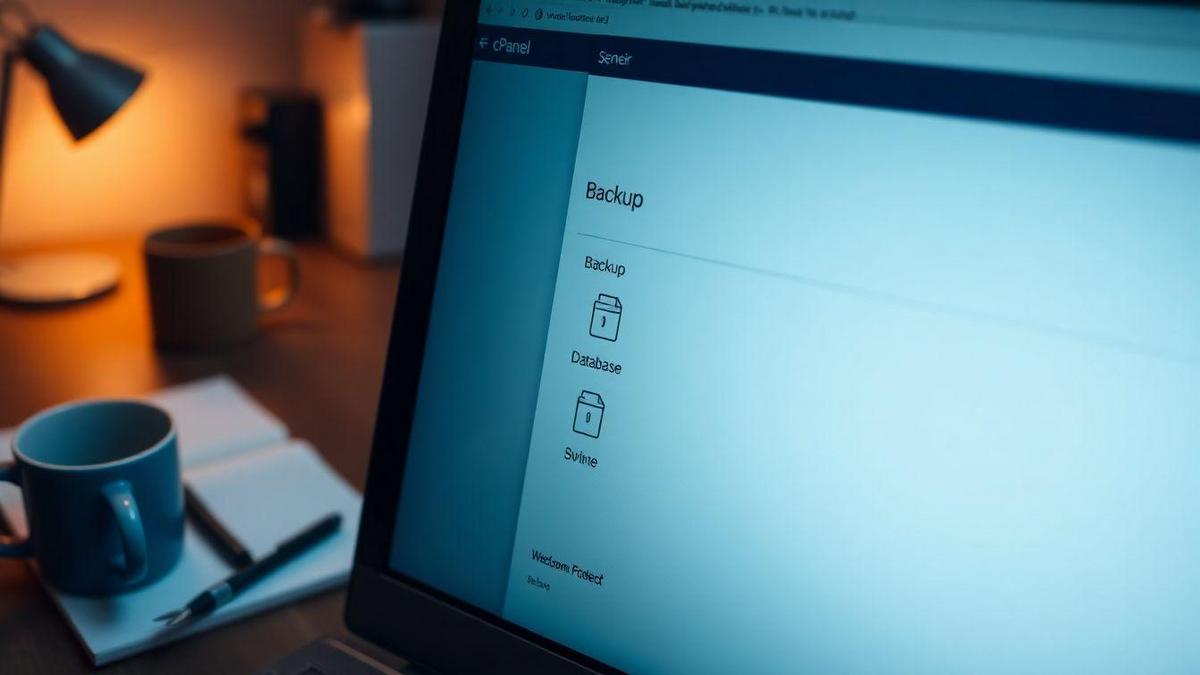If you want to learn how to set up automatic backups in cPanel, you’re in the right spot! In this article, we’ll dive into what cPanel is and why it’s a game changer for your website. We’ll cover the benefits of using cPanel for hosting, the basics of backups, and why protecting your data is super important. Plus, you’ll get easy steps on setting up automatic backups and tips on scheduling them. Let’s keep your website safe and sound together!

Understanding cPanel and Its Importance
What is cPanel?
cPanel is a web-based control panel that makes managing your website a breeze. Think of it as the dashboard of your car; it gives you the tools you need to drive your website effectively. With cPanel, you can handle everything from setting up email accounts to managing databases, all in one place. It’s user-friendly, so you don’t need to be a tech wizard to use it!
Why Use cPanel for Your Website?
Using cPanel for your website is like having a personal assistant who takes care of all the technical stuff. Here are a few reasons why cPanel is a great choice:
- Ease of Use: The interface is simple and intuitive. You can find what you need without a hassle.
- Comprehensive Tools: From file management to security features, cPanel has it all.
- Support: Many hosting providers offer great support for cPanel, which means help is just a click away if you run into trouble.
Benefits of Using cPanel for Your Hosting
Here’s a quick look at the benefits of using cPanel:
| Benefit | Description |
|---|---|
| User-Friendly | Easy to navigate, even for beginners. |
| Time-Saving | Perform multiple tasks quickly and efficiently. |
| Customization | Tailor your website settings to suit your needs. |
| Backup Options | Set up automatic backups to protect your data. |
With cPanel, you can also learn how to set up automatic backups in cPanel. This feature is crucial because it protects your website against data loss. Imagine losing all your hard work due to a technical glitch! With cPanel, you can set it and forget it, knowing your site is safe.
The Basics of Backups in cPanel
What Are Backups?
Backups are copies of your website’s data. They save everything from your files to your databases. Think of it like taking a snapshot of your website at a certain moment. If something goes wrong, you can restore your site to that point. This is crucial for keeping your data safe.
Why Are Backups Important?
Backups are important for several reasons:
- Data Loss Prevention: Accidents happen. If you accidentally delete a file or it gets corrupted, a backup can save the day.
- Security Threats: Websites can be hacked. Having a backup means you can recover your site quickly.
- Server Issues: Sometimes, servers crash. A backup helps you get back online without losing your hard work.
Protecting Your Data with Backups
You wouldn’t leave your front door wide open, right? The same goes for your website. Backups act as your security system. Here’s a simple table showing how backups protect your data:
| Backup Type | Protection Offered |
|---|---|
| Full Backup | Complete copy of your entire website |
| Partial Backup | Only specific files or databases |
| Scheduled Backup | Automatic backups at set intervals |
With backups, you can rest easy knowing your data is safe. If something goes wrong, you won’t have to start from scratch.

How to Set Up Automatic Backups in cPanel
Step-by-Step Guide to Set Up Backups
Setting up automatic backups in cPanel is a breeze! Follow these steps to keep your data safe:
- Log into your cPanel account.
- Look for the “Files” section.
- Click on “Backup Wizard.”
- Choose “Backup” and then select “Full Backup.”
- Decide where you want your backup to be sent. You can choose to have it sent to your email or store it on your server.
- Click “Generate Backup.”
That’s it! You’re on your way to having peace of mind with your data safely backed up.
Choosing the Right Backup Options
When it comes to backups, you have a few options. Here’s a quick rundown:
| Backup Type | Description |
|---|---|
| Full Backup | Backs up everything on your account. |
| Home Directory | Only backs up files in your home directory. |
| MySQL Databases | Backs up your databases separately. |
| Email Forwarders | Saves your email forwarding settings. |
Pick the one that fits your needs best. If you’re not sure, going for a Full Backup is usually the safest bet.
Configuring Your Backup Settings in cPanel
Now, let’s dive into configuring your backup settings. Here’s how:
- Go back to the “Backup Wizard.”
- After generating your backup, you’ll see options to schedule automatic backups.
- Click on “Configure” to set how often you want backups.
- You can choose daily, weekly, or monthly options.
- Make sure to save your settings!
With these settings, your backups will run automatically, saving you time and hassle.
Scheduling Backups in cPanel
How to Schedule Your Backups
Scheduling backups in cPanel is as easy as pie! First, log in to your cPanel account. Look for the Backup section. There, you’ll find an option for Backup Wizard. Click on it, and you’ll be guided through the process step-by-step.
- Choose Backup Type: You can select either a full backup or just specific files.
- Set Schedule: Decide how often you want your backups. This is crucial!
- Email Notification: You can opt to receive an email when the backup is complete. This way, you’ll always be in the loop!
Frequency of Backups: What You Need to Know
When it comes to how often you should back up your data, think about how frequently you update your website. If you’re adding new content daily, it’s wise to back up at least once a day. Here’s a quick breakdown:
| Frequency | Best For |
|---|---|
| Daily | Active blogs or e-commerce sites |
| Weekly | Static websites |
| Monthly | Low-traffic sites |
Best Practices for Scheduling Backups
To make the most of your backup schedule, keep these best practices in mind:
- Automate: Set your backups to run automatically. This saves you from forgetting!
- Test Your Backups: Occasionally, check if your backups work. You don’t want to be in a pickle when you need them.
- Store Offsite: Keep a copy of your backups in a different location. This adds an extra layer of safety.
By following these tips, you’ll be on the right track to keeping your data safe and sound.

Managing Backups in cPanel
How to Access Your Backups
Accessing your backups in cPanel is a breeze! First, log into your cPanel account. Once you’re in, look for the Files section. There, you’ll see an option labeled Backup or Backup Wizard. Click on it, and you’ll be greeted with a user-friendly interface.
Here’s a quick rundown of what you can do:
| Action | Description |
|---|---|
| Download a Full Backup | Grab a complete copy of your website. |
| Download Home Directory | Get just your website files. |
| Download MySQL Databases | Save your databases separately. |
| Download Email Forwarders | Keep your email settings safe. |
Restoring Your Website from a Backup
If something goes wrong, don’t panic! Restoring your website from a backup is simple. Head back to the Backup section in cPanel. From there, you can choose to restore files, databases, or even your entire site.
- Select Backup Type: Choose whether you want to restore the full backup, just files, or databases.
- Upload Backup File: If you have a backup file saved on your computer, you can upload it here.
- Confirm Restore: Follow the prompts to confirm that you want to restore your site.
Just like that, you can bring your website back to life!
Tips for Managing Your Backup Storage
Managing your backup storage is key to keeping everything organized. Here are some handy tips:
- Schedule Regular Backups: Set a routine to back up your site. This way, you always have the latest version saved.
- Delete Old Backups: Don’t let old backups pile up. Keep only the most recent ones to save space.
- Use Cloud Storage: Consider using cloud storage for your backups. It’s a great way to keep them safe and accessible.
cPanel Backup Configuration Options
Different Types of Backups Available
When you’re diving into cPanel, you’ll find a few different types of backups available to you. Here’s a quick rundown:
| Backup Type | Description |
|---|---|
| Full Backup | This backs up everything: your files, databases, and email accounts. Perfect if you want a complete safety net. |
| Partial Backup | This allows you to back up specific parts, like just your files or just your databases. Great if you don’t need everything. |
Choosing the Right Backup Type for Your Needs
So, how do you decide which backup to go for? Think about what you need. If you’re running a small site and only want to save your files, a partial backup might do the trick. But if you’re running a business website, a full backup is likely the way to go.
Understanding Full vs. Partial Backups
Let’s break it down a bit more.
- Full Backups: Imagine you’re packing for a big trip. You want to bring everything—your clothes, your gadgets, your favorite snacks. A full backup is like that. It captures your entire site in one go.
- Partial Backups: Now, think about a weekend getaway. You might only pack a few outfits and your essentials. That’s what a partial backup does. It lets you pick and choose what you want to save.
In short, if you want peace of mind and don’t mind a larger file, go for a full backup. If you’re looking for something quicker and more specific, a partial backup is your best bet.

cPanel Automatic Backup Tutorial
Step-by-Step Automatic Backup Setup
Setting up automatic backups in cPanel is like having a safety net for your website. You want to make sure that your data is safe, right? Let’s dive into the steps to get this done!
- Log into cPanel: Start by logging into your cPanel account. You’ll find this usually at yourdomain.com/cpanel.
- Find the Backup Wizard: Look for the Backup Wizard icon. It’s often found in the Files section. Click on it!
- Choose Backup Type: You’ll see options for Full Backup or Partial Backup. For automatic backups, go for Full Backup. This saves everything.
- Select Destination: You can choose where to store your backup. Options include your home directory or a remote FTP server. For simplicity, select your home directory.
- Set Backup Schedule: This is crucial! You’ll want to set how often you want your backups. Daily, weekly, or monthly? Pick what works best for you.
- Confirm Settings: Review your settings. Make sure everything looks good. Then, click on Create Backup.
- Check Backup Status: After a few moments, check if your backup was successful. You should see a confirmation message.
Common Issues and How to Fix Them
Sometimes, things don’t go as planned. Here are a few common hiccups you might run into and how to resolve them:
| Issue | Solution |
|---|---|
| Backup fails | Check your storage space. You might be out of room! |
| Email notifications not received | Verify your email settings in cPanel. Make sure they’re correct. |
| Backup not scheduled | Double-check your schedule settings. Did you save them? |
Troubleshooting Your Automatic Backups
If your automatic backups aren’t working, don’t panic! Here’s how to troubleshoot:
- Storage Space: Make sure your account has enough space for backups. If not, you may need to delete some old files.
- Email Notifications: If you’re not getting notified, check your spam folder. Sometimes, important emails end up there.
- Manual Backup: If automatic backups fail, try doing a manual backup. This can help you see if the problem is with the settings or the system.
Following these steps can help you confidently set up your automatic backups. Remember, keeping your data safe is super important!
Data Protection with cPanel
How Backups Help Protect Your Data
When you think about your data, it’s like having a treasure chest. You wouldn’t want to lose your precious valuables, right? That’s where backups come into play! Backups are like safety nets for your data. If something goes wrong, you can restore everything to its previous state.
Imagine you accidentally delete an important file or your website gets hacked. With backups, you can quickly recover what you lost. cPanel makes this process super easy. You can set up automatic backups to run on a schedule, so you don’t have to remember to do it yourself.
Additional Data Protection Measures in cPanel
Besides backups, cPanel offers other data protection measures. Here are some key features you might want to consider:
- Password Protection: You can protect specific directories with passwords. This means only people with the password can access those files.
- SSL Certificates: These certificates encrypt data between your website and its visitors. This keeps sensitive information safe.
- IP Blocker: If you notice suspicious activity from a certain IP address, you can block it. This helps keep unwanted visitors away.
Combining Backups with Other Security Features
Backups are great, but they work best when combined with other security features. Think of it like building a fortress around your data. Here’s a simple table showing how these features work together:
| Feature | Purpose |
|---|---|
| Backups | Restore lost data |
| Password Protection | Control access to sensitive files |
| SSL Certificates | Secure data transfer |
| IP Blocker | Prevent unauthorized access |
By using these features together, you create a strong defense for your data. It’s like having multiple locks on your door.

How to Backup Your Website in cPanel
Backing up your website is like having a safety net. If something goes wrong, you can quickly bounce back. Let’s dive into how you can do this using cPanel.
Manual vs. Automatic Backups: What’s Best?
When it comes to backups, you have two choices: manual or automatic.
- Manual Backups: This means you do it yourself. You log in to cPanel, find the backup section, and download your files. It’s like checking your pockets before leaving the house. You know what you have, but it can be a bit of a hassle.
- Automatic Backups: This is where the magic happens. You set it up once, and it runs on its own. It’s like having a robot that cleans your room without you lifting a finger. You can schedule these backups daily, weekly, or monthly.
| Backup Type | Pros | Cons |
|---|---|---|
| Manual | You control everything | Time-consuming and easy to forget |
| Automatic | Set it and forget it | Initial setup may take time |
For most folks, automatic backups are the way to go. They save time and reduce stress.
Tips for Ensuring a Successful Backup
To make sure your backup works like a charm, keep these tips in mind:
- Choose the Right Frequency: Think about how often you update your site. If you add new content daily, daily backups are smart. If you update less often, weekly might do.
- Double-Check Storage: Make sure you have enough space in your cPanel for backups. If your storage is full, your backup won’t happen!
- Test Your Backups: Don’t just set it and forget it. Occasionally, restore a backup to see if it works. It’s like trying on clothes before buying them.
Ensuring Your Website is Always Safe
Your website is like a garden; it needs care to thrive. Regular backups are essential to keeping it safe. If you ever face a problem, you’ll be glad you took the time to back it up.
Frequently asked questions
What is cPanel?
cPanel is a web hosting control panel. It helps you manage your website easily. You can control files, emails, and backups from one place.
How can I access cPanel?
You can access cPanel by entering your domain followed by /cpanel. For example, www.yourdomain.com/cpanel. Enter your username and password.
How to set up automatic backups in cPanel?
To set up automatic backups in cPanel, go to the Backup wizard. Choose “Backup” and then select “Schedule”. Pick how often you want backups.
What if I need to restore a backup?
You can restore a backup by going to the Backup section in cPanel. Click on “Restore” and follow the prompts. Choose the backup you want!
Why are backups important?
Backups are important because they keep your data safe. If something goes wrong, you can easily get your website back! Always stay prepared.

Lucas is a technical SEO expert who has optimized over 200 websites and managed Google AdSense and Ad Manager campaigns since 2016. At ReviewWebmaster.com, he shares strategies to boost organic traffic and monetize every single visit.
Types of articles he writes:
-
“How to Increase Your Blog’s RPM with Simple Tweaks”
-
“Technical SEO Checklist for WordPress Sites”
-
“Complete Beginner’s Guide to Google Ad Manager”
Why it works:
Lucas brings a confident, analytical, and performance-driven voice to the site — perfect for readers looking for actionable, results-oriented content.
